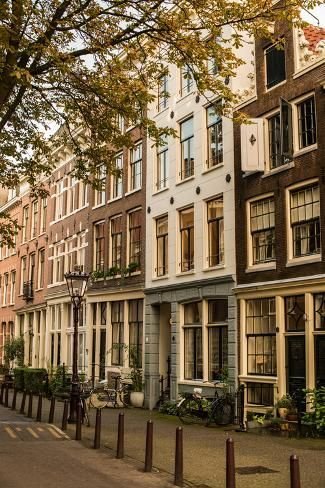Why are we so passionate about walkable communities?
Somehow, in the America of today, walking in our daily lives feels like a luxury. A luxury reserved for New Yorkers, and in general, people who can afford to live in bustling cities. How did such a basic human activity, so exciting to discover around 1 year of age, become the exclusive perk for the rich?
History tells us that the place we find ourselves in was not created by accident. Whole industries, traffic engineering departments and government agencies are responsible for the car-dependent present of the United States of Car Owners.
As an immigrant, I will always look at the environment around me with an outsider’s eye. And in my case, it’s an outsider who grew up in multifamily neighborhoods, often with no need for the hassle of car ownership, and within walking distance to schools, parks, and reliable public transport. This outsider is bewildered at the complacency with which Americans continue to live their lives dependent on the four wheels to take them from point A to point B, not trusting their own two feet to do such a simple task.
The same Americans, when given the opportunity to travel, come back inspired by the walkable European neighborhoods. Perpetual vacation lifestyle! Wake up, have coffee at the balcony overlooking the beautiful historic street. Shower, walk down the stairs and along the street to catch subway or tram, arrive at your office after a short walk from the transit stop. On your 90-minute lunch break, walk to the favorite local bakery and eat a sandwich, perhaps stopping by your apartment to feed the cat. After work, walk to pick up your child from their school nearby. Shop at your neighborhood grocery market and buy flowers from the little lady who runs the corner flower shop on the weekends.
What a bliss! Nowhere in this utopian vision is the need to buy, store, repair, and feed the 2-ton metal box. By design, this lifestyle allows one to be oblivious to the “freedom” that car commercials try to sell (go off-roading much? Then yes, you probably need a big car). And in return, this lifestyle gives one the freedom FROM owning a car.
I guess, the question I began with - why do we love walkable communities so much? - also implies another one: why do we seem to hate cars so much? Is it because car dependency is such an ingrained paradigm of the American lifestyle? In a rite of passage, a 16-year old, not old enough to vote, gets to go places at high speed, intoxicated with the opportunities that are now available to them. Is it because this paradigm goes hand in hand, and even forces the design choices of city planners and developers? In a catch-22 circular pattern, relying on cars makes us build communities with the assumption of driveable distances to all necessities of life, while essentially isolating anyone whose distances are measured in steps, not miles per hour. And having built these communities, we have no choice but to buy a car, so that we can go about our daily life, driving to school, work, shopping, and entertainment. The only walkable part of this lifestyle is the walk around the block if the development is lucky enough to include some trees and sidewalks.
I think our love for the walkable communities and our disillusionment with car-centric environments are two sides of the same coin. By definition, a walkable neighborhood is a place where pedestrians are prioritized over cars. It requires an infrastructure planning process that operates on a different set of parameters. In a walkable neighborhood, streets are slower, narrower, less straight and peppered with crosswalks. For the car driver, this neighborhood is not a pleasant experience. And right around the corner, where the street gets wider, it is dominated by public transit.
But for the two-legged human, such a neighborhood is a paradise. They can pass another human or two on the wide sidewalks and not fear for their life when crossing the street. They can walk to the local coffee shop on their coffee break, and stack up thousands of steps just living their daily life. Extra weight has a harder time sticking around when your daily routine involves walking up and down the street, and not getting in an out of the car seat.
In the end, the pursuit of walkable communities isn't merely about choosing one mode of transportation over another; it's about redefining our values and reshaping our environments to prioritize human well-being and sustainable living. It's about recognizing that, sometimes, the simplest way forward is placing one foot in front of the other.





